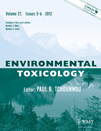
ENVIRONMENTAL TOXICOLOGY
Scope & Guideline
Decoding the Complexities of Environmental Toxins
Introduction
Aims and Scopes
- Environmental Toxicology:
The journal publishes studies related to the effects of environmental pollutants on human health and ecosystems, including the impact of chemical exposure on biological systems. - Mechanistic Studies:
Research articles often focus on the mechanistic understanding of how various toxins induce cellular damage, inflammation, oxidative stress, and apoptosis in different biological models. - Biomarkers and Prognostic Indicators:
The journal emphasizes the identification of biomarkers for toxicity and disease progression, particularly in cancer and other chronic conditions linked to environmental factors. - Ecotoxicology and Risk Assessment:
It covers research on the ecological impacts of pollutants, including studies on aquatic and terrestrial organisms, and assessments of risk associated with exposure to environmental contaminants. - Novel Therapeutics and Protective Agents:
Studies investigating the potential therapeutic effects of natural compounds and drugs in mitigating the effects of environmental toxins are also a key focus area.
Trending and Emerging
- Ferroptosis and Cell Death Mechanisms:
Research on ferroptosis—a form of regulated cell death distinct from apoptosis—is increasingly featured, indicating its relevance in understanding the toxicological effects of heavy metals and oxidative stress. - Microplastics and Nanomaterials:
There is a growing focus on the effects of microplastics and nanomaterials, particularly regarding their ecological impacts and potential toxicological effects on human health. - Epigenetics and Environmental Exposures:
Emerging studies are exploring the epigenetic modifications induced by environmental toxins, highlighting how such changes can affect gene expression and contribute to disease. - Integrated Omics Approaches:
The use of integrated multi-omics approaches (genomics, proteomics, metabolomics) to assess environmental toxicology is on the rise, allowing for a comprehensive understanding of biological responses. - Immunotoxicology:
Research focusing on the effects of environmental pollutants on the immune system is gaining importance, reflecting concerns over how these substances can disrupt immune function and contribute to health issues.
Declining or Waning
- Traditional Toxicology Methods:
There has been a noticeable decline in studies focused solely on traditional toxicology methodologies without integrating advanced techniques such as genomics and metabolomics. - Single Compound Studies:
Research that examines the effects of single environmental toxins in isolation has decreased, with a shift toward more complex studies involving mixtures and interactions of multiple substances. - Basic Toxicological Profiles:
The publication of papers detailing basic toxicological profiles of known compounds has waned, as the field moves towards understanding mechanisms and effects at the molecular and cellular levels.
Similar Journals
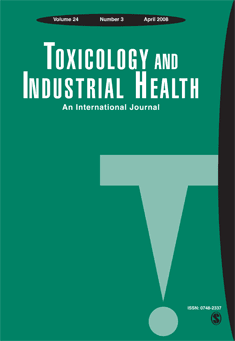
TOXICOLOGY AND INDUSTRIAL HEALTH
Advancing knowledge in toxicology for a safer industrial future.TOXICOLOGY AND INDUSTRIAL HEALTH, published by SAGE PUBLICATIONS INC, is a premier journal in the field of toxicology, public health, and environmental health, with a significant history dating back to 1985. With its ISSN 0748-2337 and E-ISSN 1477-0393, the journal provides a platform for disseminating groundbreaking research and comprehensive reviews that address the complexities of toxic substances in industrial and occupational settings. Despite its Q3 ranking among peers in health, toxicology, and public health, this journal is becoming increasingly influential, reflected in its growing citation metrics. Researchers and professionals benefit from its commitment to fostering knowledge in both theoretical and practical contexts, making it an essential resource for those dedicated to advancing understanding in this vital field. The journal's main objectives include promoting research addressing the implications of toxicology on health and safety standards across industries, ensuring accessibility to current studies for a global audience. Overall, TOXICOLOGY AND INDUSTRIAL HEALTH plays a critical role in bridging the gap between research and real-world applications, proving invaluable to students, professionals, and researchers alike in their pursuit of enhancing public health and environmental safety.
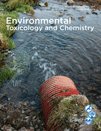
ENVIRONMENTAL TOXICOLOGY AND CHEMISTRY
Championing rigorous research in environmental chemistry.ENVIRONMENTAL TOXICOLOGY AND CHEMISTRY is a premier journal published by Wiley that has established itself as an essential resource for researchers, professionals, and students in the fields of environmental chemistry and toxicology. With a robust trajectory since its inception in 1982, the journal offers critical insights into the interactions between environmental pollutants and biological systems, aiming to advance our understanding of the impacts of toxins on health and ecosystems. Recognized in the top quartile (Q1) of both Environmental Chemistry and Health, Toxicology, and Mutagenesis categories as of 2023, the journal is respected for its rigorous peer-reviewed content and high impact factor. It ranks 33rd out of 148 in Health, Toxicology and Mutagenesis and 48th out of 147 in Environmental Chemistry according to Scopus metrics, placing it firmly within the most influential publications in these fields. Although it does not currently offer open access, the journal remains a vital conduit for disseminating cutting-edge research and innovative methodologies that address pressing environmental challenges.
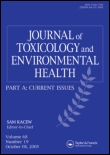
JOURNAL OF TOXICOLOGY AND ENVIRONMENTAL HEALTH-PART A-CURRENT ISSUES
Illuminating Critical Issues in Environmental ToxicologyJOURNAL OF TOXICOLOGY AND ENVIRONMENTAL HEALTH-PART A-CURRENT ISSUES, published by Taylor & Francis Inc, stands as a key resource in the interdisciplinary field of toxicology and environmental health. Operating under the ISSN 1528-7394 and E-ISSN 1087-2620, this journal maintains a strong presence with a Q2 category ranking in Health, Toxicology and Mutagenesis and a Q3 ranking in Toxicology as of 2023. It aims to disseminate critical findings that address contemporary issues in toxicology and environmental health, emphasizing the implications of environmental agents on human health. The journal offers both subscription and open access options, making cutting-edge research accessible to a diverse readership. With coverage of key topics from 1998 to 2024, it is an essential platform for academics, professionals, and students seeking to stay at the forefront of environmental health sciences.

BULLETIN OF ENVIRONMENTAL CONTAMINATION AND TOXICOLOGY
Unveiling the impacts of toxins on ecosystems and society.BULLETIN OF ENVIRONMENTAL CONTAMINATION AND TOXICOLOGY, published by SPRINGER, is a pivotal journal in the fields of Environmental Science, Toxicology, and Public Health. With a strong history of dissemination since its inception in 1966, the journal predominantly focuses on the latest advances in understanding environmental contaminants and their toxicological effects on health and ecosystems. It currently holds a respectable Q2 ranking across multiple categories including Health, Toxicology and Mutagenesis, Medicine (miscellaneous), and Pollution, as per the 2023 metrics. While the journal is not Open Access, it provides an invaluable platform for researchers, professionals, and students seeking to contribute to and stay informed on critical issues regarding environmental hazards and their implications. With an engaged community of scholars and practitioners, this journal continues to be an essential resource for addressing the pressing challenges of environmental contamination and its health impacts, guiding future research and policy decisions.

Molecular & Cellular Toxicology
Exploring the intricate links between toxicity and health.Molecular & Cellular Toxicology, published by the Korean Society Toxicogenomics & Toxicoproteomics (KSTT), is a significant journal in the field of toxicology, providing crucial insights into molecular mechanisms underlying toxic responses. With an ISSN of 1738-642X and E-ISSN 2092-8467, this journal serves as a vital platform for researchers, professionals, and students interested in the latest findings and advancements in toxicology, health, and environmental science. Although it operates under a subscription model, it maintains rigorous peer review standards, contributing to its respectable Q3 classification in Health, Toxicology and Mutagenesis, and its Q2 standing in Pharmacology, Toxicology, and Pharmaceutics. The journal, intersecting with innovative aspects of pharmacology and public health, aims to foster a deeper understanding of toxicological impacts on cellular processes and overall health. Located in Germany and supported by a dedicated editorial board, Molecular & Cellular Toxicology stands out in the academic community, encouraging interdisciplinary discourse and collaboration to address critical toxicological challenges. Engage with us for cutting-edge research that informs and shapes the future of toxicological science.

Journal of Environmental Science and Health Part C-Toxicology and Carcinogenesis
Connecting Environmental Science with Health OutcomesThe Journal of Environmental Science and Health Part C-Toxicology and Carcinogenesis is a vital publication in the fields of environmental science, toxicology, and cancer research, published by Taylor & Francis Inc. With an ISSN of 2689-6583 and E-ISSN 2689-6591, this journal provides a platform for peer-reviewed research that explores the intersection of environmental factors and health outcomes, particularly focusing on toxicological and carcinogenic impacts. Though it does not currently offer Open Access, it remains a significant contributor to academia with its current ranking in the Q4 category for Cancer Research and Q3 in Health, Toxicology and Mutagenesis. The journal has converged from 2020 to 2024 and aims to disseminate pioneering studies that inform public health policies and foster a deeper understanding of environmental toxins. Aspiring researchers, professionals, and students will find this journal to be an essential resource for the latest findings and discussions within these critical fields.

ARCHIVES OF ENVIRONMENTAL CONTAMINATION AND TOXICOLOGY
Fostering dialogue on toxicological effects and solutions.ARCHIVES OF ENVIRONMENTAL CONTAMINATION AND TOXICOLOGY, published by Springer, stands as a leading journal in the field of environmental health and toxicology. With an impressive impact factor, it maintains its stature in the Q1 category for Health, Toxicology and Mutagenesis, Medicine (miscellaneous), and Pollution as of 2023. Since its inception in 1973, this journal has been a crucial platform for disseminating high-quality research that addresses environmental contaminants and their implications on human health and ecosystems. The journal welcomes original articles, review papers, and discussions that deepen our understanding of exposure assessment, bioaccumulation, and toxicological effects of pollutants. While it is not an open-access publication, its commitment to rigorous peer-review ensures that every piece published contributes significantly to the ongoing dialogue within the scientific community. Researchers, professionals, and students engaged in environmental science, toxicology, and public health will find the findings shared in this journal invaluable to their work.

Toxicology Research
Fostering interdisciplinary collaboration for a healthier world.Toxicology Research is a distinguished journal dedicated to advancing the field of toxicology through the dissemination of high-quality research. Published by Oxford University Press, this UK-based journal focuses on critical aspects of toxicology and mutagenesis, highlighting both environmental and pharmacological implications. With an ISSN of 2045-452X and an E-ISSN of 2045-4538, it serves as a valuable resource for researchers, professionals, and students alike. Currently categorized in the Q3 quartile for Health, Toxicology and Mutagenesis, as well as Toxicology in 2023, Toxicology Research maintains a visible presence in Scopus rankings, positioning itself within the targeted professional community. Although the journal operates without open access options, its importance in contributing to scientific discussions and policy formation is undeniable. Covering content from 2012 to 2024, it continues to provide insights into contemporary toxicological challenges, thereby fostering interdisciplinary collaborations and informing best practices in health and safety.
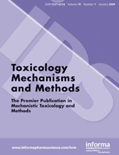
TOXICOLOGY MECHANISMS AND METHODS
Empowering researchers with cutting-edge toxicology studies.TOXICOLOGY MECHANISMS AND METHODS is a distinguished peer-reviewed journal dedicated to the advancement of toxicological research, published by Taylor & Francis Ltd. With its ISSN 1537-6516 and E-ISSN 1537-6524, this esteemed journal features critical studies and innovative methodologies in the field of toxicology, aligning with its mission to enhance understanding of biological mechanisms and risk assessment. The journal holds a commendable Q2 ranking in both the Health, Toxicology and Mutagenesis, and Toxicology categories, as well as strong positions in Scopus rankings, reflecting its influence with a 71st percentile rank in Toxicology and a 69th percentile rank in Environmental Health. Researchers, professionals, and students in the toxicology domain will find this journal to be an invaluable resource, offering open access options that foster widespread dissemination of its findings. Since its inception, encompassing converged years from 1991 to 1995 and from 2002 to 2024, the journal remains at the forefront of critical discourse and innovative research methods, making it a vital platform for advancing toxicological science globally.

ARCHIVES OF TOXICOLOGY
Illuminating the Path in Toxicology and HealthARCHIVES OF TOXICOLOGY is a prestigious journal published by Springer Heidelberg, dedicated to advancing research in the field of toxicology and related disciplines. With a distinguished history dating back to 1930, this journal has continuously provided vital insights and groundbreaking studies, making it a cornerstone in the areas of health, toxicology, and medicine. Recognized for its high impact, it occupies a top-ranking position in Scopus, with remarkable quartile placements in 2023, categorizing it as Q1 in Health, Toxicology and Mutagenesis, and Q1 in Medicine (Miscellaneous). The journal highlights critical research and innovative methodologies, appealing to a diverse audience of researchers, professionals, and students committed to understanding the complexities of toxic substances and their implications for public health and environmental safety. The journal does not currently offer open access, allowing for a more traditional but rigorous peer-review process that ensures the quality and integrity of every published article. Join the global discourse in toxicological science with ARCHIVES OF TOXICOLOGY, where every contribution furthers the understanding of safety and toxicity in our world.